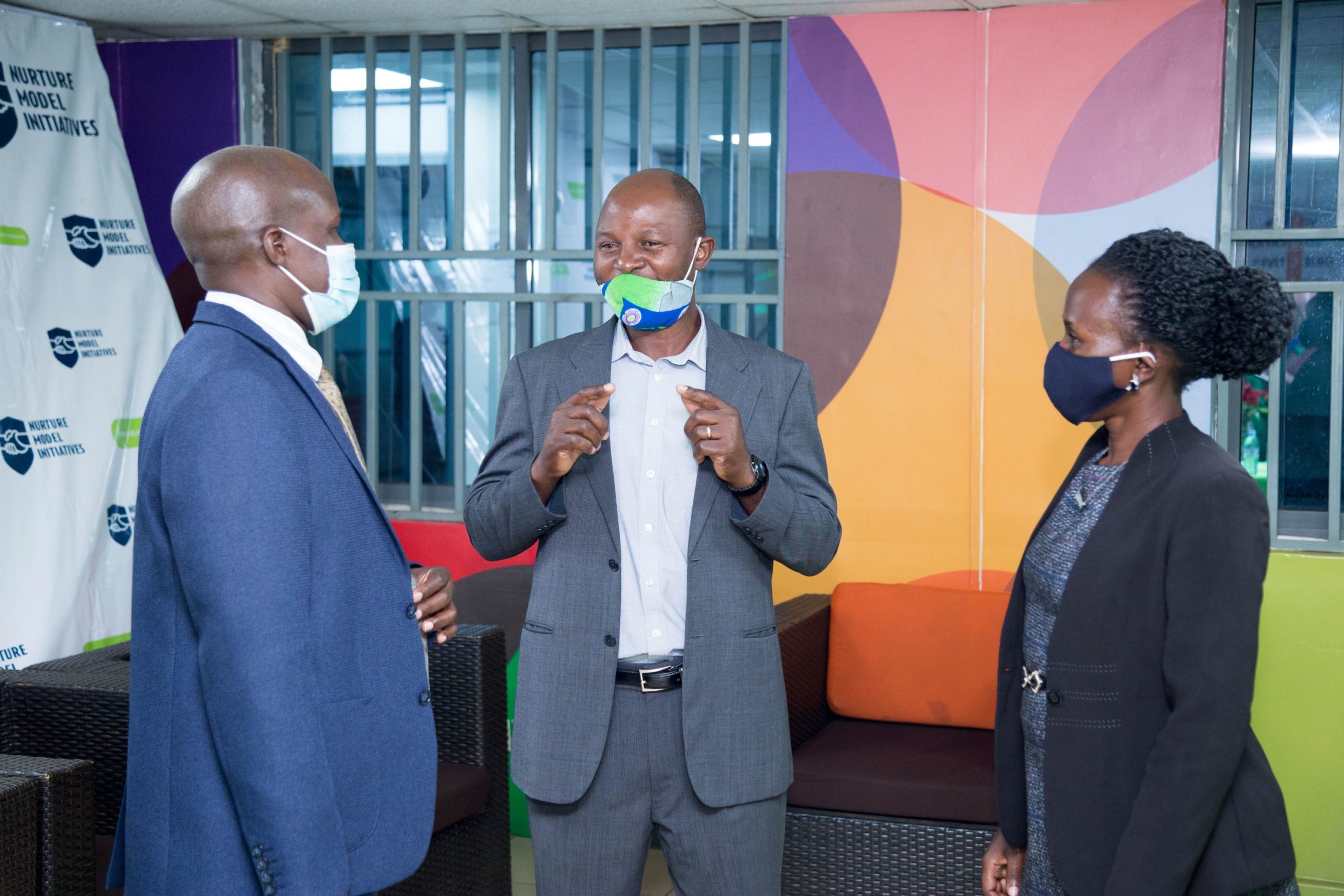DR. JANE FRANCIS NAMUKASA: Innovation for smart cities and climate smart agriculture towards sustainable sanitation and climate change – PML Daily

 KAMPALA — World Toilet Day 2020 focuses on sustainable sanitation and climate change. Climate change is getting worse. Flood, drought and rising sea levels are threatening sanitation systems – from toilets to septic tanks to treatment plants.
KAMPALA — World Toilet Day 2020 focuses on sustainable sanitation and climate change. Climate change is getting worse. Flood, drought and rising sea levels are threatening sanitation systems – from toilets to septic tanks to treatment plants.
Therefore, everyone must have sustainable sanitation, alongside clean water and handwashing facilities, to help protect and maintain our health security and stop the spread of deadly infectious diseases such as COVID-19, cholera and typhoid. Sustainable sanitation systems should also reuse waste to safely boost agriculture, and reduce and capture emissions for greener energy.
World Toilet Day, 19th November, celebrates toilets and raises awareness of the 4.2 billion people living without access to safely managed sanitation. It is about taking action to tackle the global sanitation crisis and achieve Sustainable Development Goal 6: water and sanitation for all by 2030.
One of the Keynote speakers at the 2019 World Toilet Day(WTD), Mr. Sadhguru said, “As it is important to have access to food and water, it is equally important for a human being to have access to a clean toilet to bring health, well-being and to establish human dignity.”
Uganda joins the rest of the world to celebrate this year’s WTD, organized by Nurture Model Initiatives Limited(NMI) the sole distributors of Green toilet technologies in the East African region under the theme: “Innovation for smart cities and climate smart agriculture towards sustainable sanitation and climate change”.
Nurture Model Initiatives Limited has partnered with the Professional Urban Planners Association of East Africa(PUPAEA) and the Uganda National Entrepreneurship Development Institute(UNEDI) to launch a comprehensive ten-year effort called the Uganda Program for Sanitation and Market-led Agricultural Rural Technologies (UP-SMART. The project aims to supply and distribute 1,000,000 “Green toilet technologies” and other solutions within Uganda’s stressed communities such as refugee camps and their host communities, slums and rural poor farming communities by 2030.
This will improve both urban and rural sanitation, ensure climate smart agricultural productivity and create over 100,000 jobs through green economy revolution.
What are Green/dry Toilets technologies?
Green/dry toilet is an ecological dry toilet that works without water or electricity. The operation of the Green Toilet is based on a natural composting process in special containers, which separate the liquid waste from the solids. This separation enables the composting to start already when the toilet is in use and keep the toilet odourless as well as pleasant to use. One Green toilet can be used about 800 times before service.
When the container becomes full, it is taken out from the toilet and replaced with an empty container. This switch can be done in a matter of minutes and the use of the toilet can continue without interruptions.
After some 2-5 months, when the biomass in the full container is fully decomposed – it can be used as eco-fertilizer in a farm or a private garden. Thus, all the valuable nutrients, e.g. phosphorous and nitrogen that we all humans produce daily, are restored safely back to the soil. Using a composting toilet is a simple and safe way to handle sanitation in any place where there is no drain, electricity or water available.
Green Toilet can be maintained easily without any special tools or expertise and is therefore an ideal solution for both homes and public sites.
Advantages of Green/dry Toilets technologies.
Do not need water or electricity: By definition, a dry toilet is a toilet that requires no water for flushing. The human waste gets composted as it would in nature without any toilet system. The fact that dry toilets operate without any water or electricity is the number one general advantage.
Environmental/eco-friendly: Globally, there are millions of places without immediate connection to proper sewage systems and waste management plants. In those places, a composting dry toilet is a necessity, because without any toilet system, human waste would pollute the environment. In particular, areas near water are vulnerable to human waste pollution. For example, our beloved Lake Victoria could suffer from improper human waste management.
Much more affordable: If managing our waste is key in preserving our beloved nature, why wouldn’t we build proper sewage systems and factories to manage it? The answer is lack of money. Composting dry toilets are much less expensive compared to large underground sewage systems to build and maintain.
The price for one Green Toilet container that can serve the needs of a one family is a quarter the price of building an underground sewage system. As a result, more people can have access to proper toilet and waste management system which improves the quality of life for many.
Infection control and prevention: I cannot overemphasize the importance of a hygienic and safe toilet enough. Today, hundreds of thousands of people across the globe get sick because of pathogens they got from unhygienic toilet and contaminated drinking water.
Social benefits: Daily, unaccounted number of young women face sexual harassment or even get raped while using improper toilets or defecating out in the open. The outcome is that many people have to stay out of work, school and other everyday duties. Therefore, from social perspective, a toilet is a necessity, privilege and opportunity-maker.
Pleasant user-experience: Green toilets are clean and do not smell.
The forever-continuing debate in the field of composting dry toilets has been about how and when to separate urine from feacal matter. Separating liquid waste (i.e. urine) from solid (i.e. feces, toilet paper etc.) is the key to odorless toilet experience. Human waste in a bucket with no separation at all will immediately start to rot causing the terrible smell many people have encountered with pit latrines. Therefore, there is no debate whether a good composting dry toilet separates urine from feces or not. The debate is more about how to separate these. Should it be done already at the toilet seat or squatting plate without mixing urine and solid waste at any point, or should the separation be done after the urine and solid waste has mixed together, like in Green Toilet? There is no obvious answer which approach is better, but in our view, the advantages of the latter option outweigh the other.
Effortless maintenance: Green Toilet mixes urine with solid waste and separates them using the double base only after that, the toilet produces much less urine to deal with.
The compost mass inside the Green Toilet uses about 70 – 90 % of the urine itself during the process of composting, while the rest of the urine is led to the excess liquid canister. If the urine would be separated in the toilet seat or squatting plate, there would be much more urine to treat at the toilet site. Note that most of the human waste is urine. On average, a person urinates 1 – 1.5 liters a day. In a public toilet site, a 20-liter urine canister would fill up very quickly. In that case, someone would have to go to empty the urine canister, causing more work to maintain the toilet. Also, some moisture is necessary for the composting process.
If the urine would be totally separated from the solid material, it can be too dry to compost efficiently. Therefore, Green Toilet does both: separates excess liquid but keeps the compost mass moist enough.
Uganda has been blessed with superior innovation of the Green Toilet, developed in Finland since 1992, by a “dry toilet guru” who devoted most of his life to composting and eco-living. We honestly think, there is no better solution anywhere in the world, nor there needs to be. Green /dry toilet is effortless to maintain, pleasant to use, doesn’t smell, lasts for decades in use and an amazing organic fertilizer-maker!
===================================
The author is a Senior Public Health Research Scientist.
